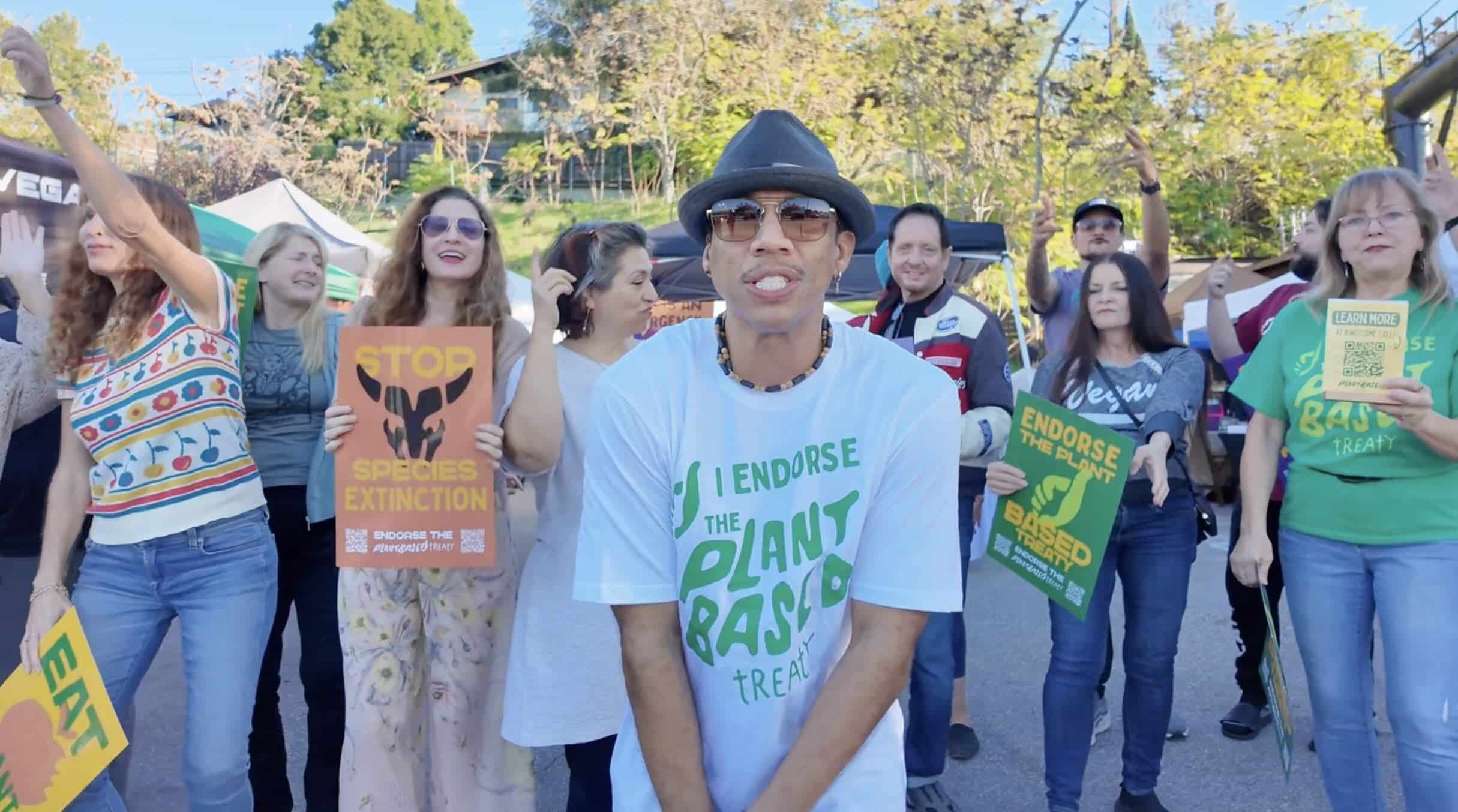Four Ways to Save India’s Elephants
Share This
India’s elephants are struggling, both in the wild and in captivity. Now, Sangita Iyer, the maker of the documentary Gods in Shackles, is using four practical solutions to save them

Sangita Iyer, VFAE
Los Angeles, May 31st, 2024 — India’s elephants desperately need help. With more than 60% of the Asian elephants left on the planet being in India, this nation should be working feverishly to protect them. Now, Sangita Iyer, star and producer of the must-watch documentary Gods in Shackles, has come up with 4 ingenious, cost-effective and practical solutions to save India’s elephants from speeding trains, deep wells, diminishing habitats and cruel festivals, thereby insuring the survival of this endangered and iconic species of whom only 30 to 50-thousand remain.
Voices for Asian Elephants Society (VFAE), the nonprofit she founded, is now implementing these solutions all over India. But, this organization still needs a lot more funding to put them everywhere they’re needed. UnchainedTV’s Jane Velez-Mitchell spoke with Iyer to learn all about her brilliant solutions that are already making a difference by saving hundreds of elephants in India. You can watch the conversation here:
Solution 1: Robotic Elephants

Robotic elephant at a temple
In addition to being an author, a multiple award-winning nature & wildlife filmmaker, a broadcast journalist, and a biologist, Sangita Iyer also founded Voices for Asian Elephants Society, an organization exclusively dedicated to helping this iconic Asian species. For her courage in exposing the plight of captive elephants being exploited for profit behind the veil of culture and religion, India’s President gave her the “Nari Shakthi Puraskaar” — Women Power Award. She also produced the series Asian Elephants 101, also streaming on UnchainedTV, nine episodes of which were premiered on multiple National Geographic channels.
India’s elephants are being exploited for profit in the name of culture and religion. In the State called Kerala, in the southern part of India, they are kept captive in chains in temples and then paraded among noisy crowds of people as part of religious festivals. However, Iyer found an ingenious technological solution to this: replacing the live elephants with robotic versions that look and move exactly like the real ones. Two of these elephants have already been built. And, explained Iyer, they’re surprisingly inexpensive to produce:
“It costs between $12,000 to $15,000, so it’s not a lot of money, to be honest with you. At the end of the day, if all of us come together, we can easily raise that kind of money. And I’m so proud to say that our second robotic elephant has been entirely donated by Dolores Whitley, who lives in New York. She’s been supporting me since 2013, and she’s completely donated every penny for the second robotic elephant. The first one was donated entirely by Ganesh Hariharan, who’s of Indian origin, but he lives in the United States.”
Click Here to Donate & Save An Indian Elephant
“There is not a single Hindu, Biblical or Islamic scripture that says, ‘You have to exploit elephants to make me happy.’” — Sangita Iyer, Voice for Asian Elephants
Solution 2: Preventing Trains from Hitting Elephants

Elesense device being installed
It’s not only the captive elephants who suffer in India. Wild elephants also have to deal with all sorts of threats. One of these is being hit by trains. To solve this, Iyer has another ingenious high-tech solution:
“In the last ten years, approximately 896 elephants have gotten hit and killed on India’s deadly train tracks, and West Bengal is one of the most notorious states for this. We partnered with an indigenous group of people… they developed this artificial intelligence-based technology, which is called Elesense. The minute this device detects or feels the pattern, the thermal, the movement patterns, and the height of an elephant, it sends out a signal to our team, to the Forest Department, and the Railway Department. As soon as the Railway Department receives it, in their control center, they use a walkie-talkie to call the train pilot and say, ‘Slow down.’”
In the last year alone Elesense devices have averted 627 elephant collisions with trains. 62 elephants have been saved from this horrific outcome in the first few months of 2024 alone.
“We are seeing concrete results. There’s nothing that makes us happier than seeing these tangible outcomes.” — Sangita Iyer, Voice for Asian Elephants
Solution 3: Barriers Around Wells and Shallow Waterholes

Waterhole at Bhagabandh-Sarisua-Kaptipada range (c)VFAE
The documentary Gods in Shackles, which is about the cruel treatment of captive elephants in the Indian state of Kerala, garnered 13 international film festival awards. It is now streaming for free on UnchainedTV. This revealing film is based on Iyer’s best-selling book with the same title. However, not all of the problems India’s elephants face come from the type of exploitation and abuse the documentary exposes. Some of them are simply preventable accidents, such as elephants falling into the deep wells that are scattered all over the country and have become like booby traps for these majestic beings. Here’s what Iyer’s team is doing to solve this problem:
“In Odisha in particular, approximately 70 elephants have died falling into wells, so we partnered again with local people and we had them install t-shaped barriers around key wells. We covered about 100 wells, and there have been no elephant deaths. After we did that, I actually lobbied the state government, and this year I am so happy to report that, because of our advocacy, in the month of March, I got a message saying that all of the 1300 wells in Odisha have been covered.”
Another way to address this issue is by providing shallow waterholes to the elephants so they do not need to risk their lives in the wells. As forests are getting reduced, elephants are forced to enter villages and cropland to find water. This has increased human-elephant conflict and elephant deaths from vehicle collisions. Creating accessible and safe waterholes for the elephants helps to reduce this problem.
Solution 4: Wildlife Corridors

Asian elephant, AdobeStock_612820861
India is the most populated country in the world, and people are continuously encroaching on the elephants’ habitat. One of the most serious problems India’s elephants face is their habitat being too fragmented. Every time a city grows, or land is used for agriculture, a bit of wild habitat is lost, isolating the elephants in pockets of wilderness that keep getting smaller. The only way around this is to create wildlife corridors that allow the elephants to move from one patch to the other. Says Iyer:
“We are purchasing swaths of land and we are completely rewilding the land. What we did, in June of 2023, is purchase a 4-acre corridor. This allows 340 plus elephants from this forest patch to walk freely towards the next forest patch, and this is so critically important because, if the elephants stay in one area, they’ll be inbreeding.”
You can become a part of these solutions by donating to Iyer’s various projects at Voices for Asian Elephants,
“It takes time for attitudes and mindsets to shift because these memes have been planted in their minds for centuries…It’s almost like unlearning and then relearning.” — Sangita Iyer, Voice for Asian Elephants
Share This
Latest News
Stay Tuned In
Be the first to know when new shows drop! Plus, get the hottest headlines, inspiring stories, and behind-the-scenes extras. Sign up and keep streaming!
you might also like
A vegan food pyramid would eliminate meat, dairy, and eggs entirely to promote better health and well-being. Los Angeles, CA - January 18th, 2026 - A truly health-focused dietary framework must prioritize plant-based whole foods [...]
The 1890s Vegan Thanksgiving Gala reveals the forgotten history of veganism in America through food, culture, and living history. Jane Velez-Mitchell Seth Tibbott and Anne Dinshah Los Angeles, January 16, 2026 — On [...]
The not guilty verdicts in the UK Beagle Rescue Trial are a huge win for the animal rights movement in general and the "open rescue" movement in particular. Los Angeles, California, January 12th, 2025 - [...]









